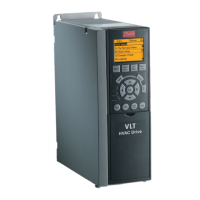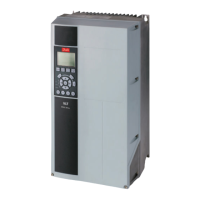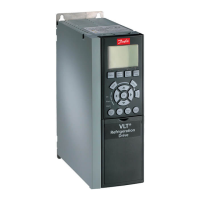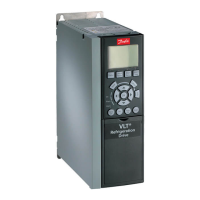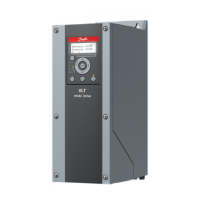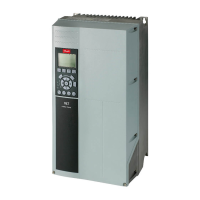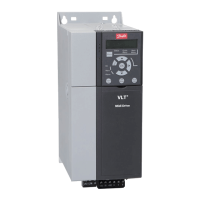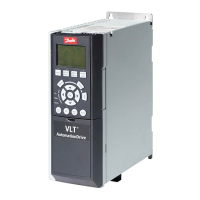•
•
•
•
•
•
•
•
•
•
•
-
-
-
-
-
-
Electronic components.
Heat sink.
Fans.
Keep the heat sink and fans free from dust buildup. When dust accumulates on electronic components, it acts as a layer of insula-
tion. This layer reduces the cooling capacity of the components, and the components become warmer. The hotter environment de-
creases the life of the electronic components. Dust can also accumulate on fan blades, causing an imbalance which prevents the fan
from properly cooling the unit. Dust buildup can also damage fan bearings and cause premature fan failure.
For more information, refer to the Maintenance and Service section.
4.5.4 Potentially Explosive Atmospheres
W A R N I N G
EXPLOSIVE ATMOSPHERE
Installing the drive in a potentially explosive atmosphere can lead to death, personal injury, or property damage.
Install the unit in a cabinet outside of the potentially explosive area.
Use a motor with an appropriate ATEX protection class.
Install a PTC temperature sensor to monitor the motor temperature.
Install short motor cables.
Use sine-wave output lters when shielded motor cables are not used.
As required by the EU Directive 2014/34/EU, any electrical or electronic device intended for use in an environment with a potentially
explosive mixture of air, ammable gas, or dust must be ATEX-certied. Systems operated in this environment must fulll the follow-
ing special conditions to comply with the ATEX protection class:
Class d species that if a spark occurs, it is contained in a protected area.
Class e prohibits any occurrence of a spark.
Motors with class d protection
Does not require approval. Special wiring and containment are required.
Motors with class e or class n protection
When combined with an ATEX-approved PTC monitoring device like the VLT
®
PTC Thermistor Card MCB 112, installation does not
need an individual approval from an approbated organization.
Motors with class d/e protection
The motor itself has an e ignition protection class, while the motor cabling and connection environment are in compliance with the
d classication. To attenuate the high peak voltage, use a sine-wave lter at the drive output.
N O T I C E
MOTOR THERMISTOR SENSOR MONITORING
Units with the VLT® PTC Thermistor Card MCB 112 option are PTB-certied for potentially explosive atmospheres.
4.6 Installation Requirements
N O T I C E
OVERHEATING
Improper mounting can result in overheating and reduced performance.
Install the drive according to the installation and cooling requirements.
Locate the unit as near to the motor as possible. For the maximum motor cable length, see 10.5 Motor and Control Cables.
Ensure unit stability by mounting the unit to a solid surface.
Ensure that the strength of the mounting location supports the unit weight.
Ensure that there is enough space around the unit for proper cooling. Refer to 10.10 Enclosure Airow.
Ensure enough access to open the door.
Ensure cable entry from the bottom.
AQ357954340588en-000201 / 130R088136 | Danfoss A/S © 2020.09
Mechanical Installation
VLT® Refrigeration Drive FC 103
Operating Guide
